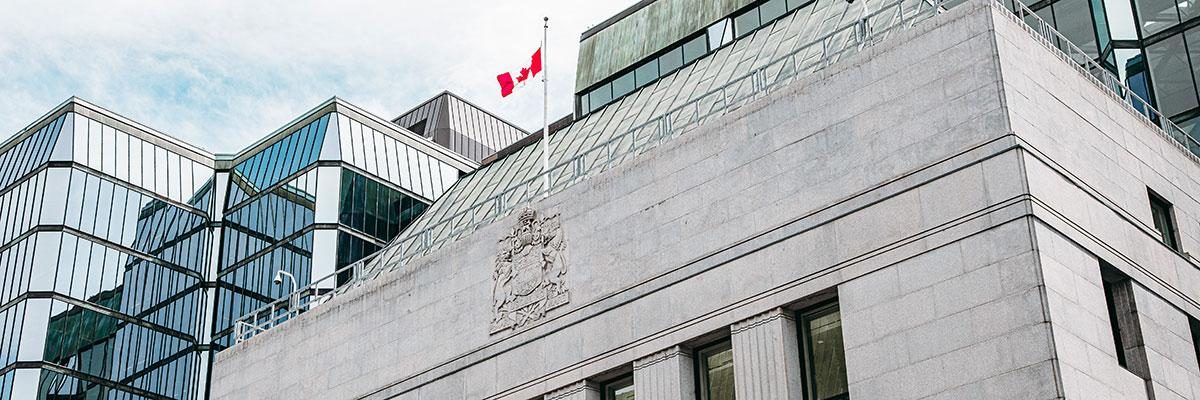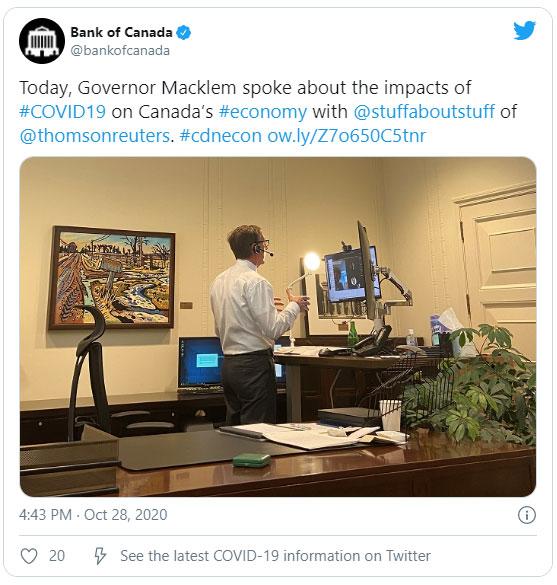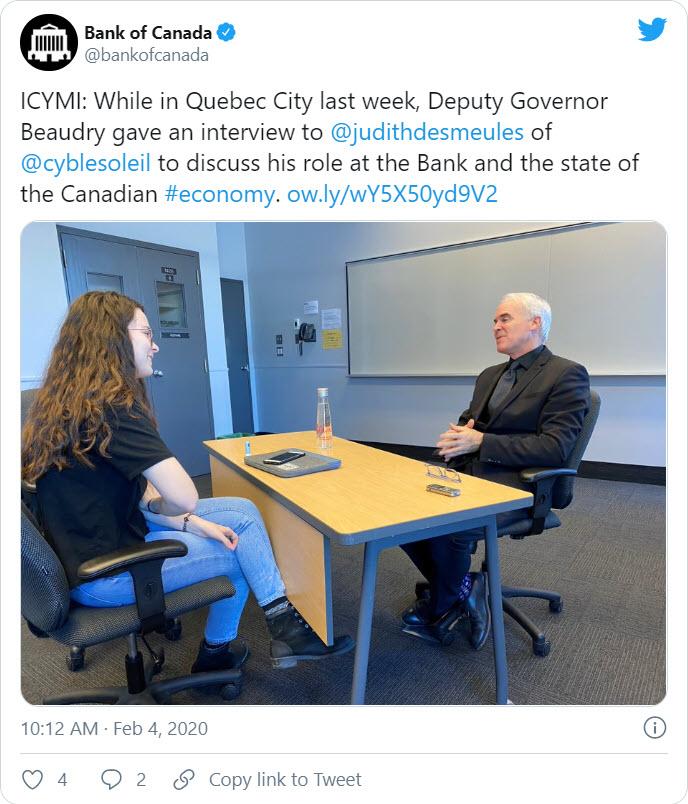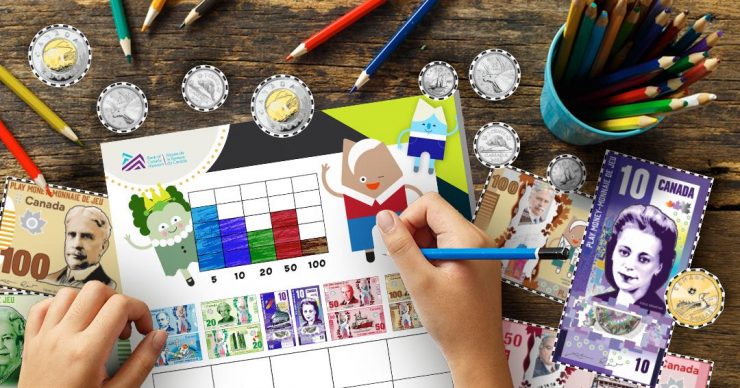
Communications and outreach
The COVID‑19 pandemic highlighted the importance of clear, accurate and timely communications in maintaining public trust. As the Bank worked to support the country’s economy with extraordinary measures, it kept market participants informed of its actions and made sure its policies and decisions were well understood by both the media and the general public.
The Bank found creative ways to connect with Canadians online. It successfully adapted its speeches, conferences and educational activities—including the Bank of Canada Museum—to a virtual format.
At the same time, the Bank deepened and broadened its relationships with a range of stakeholders from the public, the private sector and civil society. This included advancing key initiatives related to the:
- renewal of the inflation‑control target
- next $5 bank note
- potential for a future central bank digital currency
- supervision of retail payment service providers
- creation of the first‑ever central bank network for Indigenous inclusion
The Bank welcomed a new Governor partway through the year and introduced him virtually to Canadians and the world.
Today, Governor Macklem spoke about the impacts of #COVID19 on Canada’s #economy with @stuffaboutstuff of @thomsonreuters. #cdnecon https://twitter.com/bankofcanada/status/1321553200026128391
— Bank of Canada (@bankofcanada) Oct 28, 2020

https://twitter.com/bankofcanada/status/1321553200026128391
Delivering digital communications
Throughout the pandemic months of 2020, the Bank delivered clear and frequent digital communications about its actions in support of the economy and financial system.
Being transparent and accessible
Notably, the Bank emphasized explaining why it was taking these actions and how they worked. This transparency was particularly important in clarifying the Bank’s many asset purchase programs and the resulting substantial increase in its balance sheet.
The Bank’s commitment to accurate, automated and detailed financial reporting helped maintain public confidence and trust during a time of heightened scrutiny.
As well, the Bank communicated extensively on economic issues related to the pandemic—through virtual public speeches, regular background briefings, interviews with journalists, social media and a dedicated web page.
The Bank ramped up its communications to the general public through its digital magazine—The Economy, Plain & Simple. It also created a series of accessible articles, videos and animations to explain its response to the COVID‑19 crisis. These covered everything from quantitative easing to payment systems.
Creating a virtual museum experience
The pandemic forced the Bank of Canada Museum to close in March 2020. Staff continued to care for the National Currency Collection while:
- developing several new virtual educational resources for the Museum’s website
- transforming popular onsite activities—including lesson plans and teacher discussion guides—into digital presentations
The Bank also continued to promote the Museum’s educational resources through virtual conferences, webinars and a new monthly newsletter.
The closure enabled the Museum to make progress on some longer‑term accessibility initiatives. These include improving the visitor experience for when the building re‑opens to the public.
Advancing key stakeholder initiatives
Throughout the pandemic months of 2020, the Bank continued its public opinion research program and engaged virtually with key stakeholders on several important initiatives.
Measuring public opinion
Knowing that public opinion can be volatile in times of crisis, the Bank initiated pulse checks to monitor changes in how people view the Bank and how much they trust and support it.
Results showed:
- increased attention on the economy and the Bank
- sustained levels of trust in the institution
- support for its pandemic response
This research is invaluable in understanding how a crisis can shape public opinion. It also helps to guide the Bank in developing communications products to meet the public interest. The Bank will continue to closely monitor public opinion throughout—and after—the COVID‑19 crisis.
Consulting with Canadians on inflation control
From August to October 2020, the Bank conducted its first‑ever Canada‑wide public consultation on the renewal of the inflation target. More than 8,500 people participated from every province and territory. This input will help the Bank to understand:
- how different segments of the public are affected by the current inflation‑targeting framework
- how they may view alternative monetary policy regimes
These insights lay vital groundwork for the 2021 renewal and will be used to inform the policy process.
ICYMI: While in Quebec City last week, Deputy Governor Beaudry gave an interview to @judithdesmeules of @cyblesoleil to discuss his role at the Bank and the state of the Canadian #economy. ow.ly/wY5X50yd9V2 pic.twitter.com/1224712383496687618
— Bank of Canada (@bankofcanada) February 4, 2020

https://twitter.com/bankofcanada/status/1224712383496687618
Building bridges with Indigenous groups
The Bank continued to build stronger ties with Indigenous‑led businesses and organizations in 2020. This included fostering an ongoing partnership with the Tulo Centre of Indigenous Economics. These relationships enable the Bank to better incorporate First Nations, Métis and Inuit perspectives into its policy initiatives and assessment of the Canadian economy.
As well, the Bank worked with the Reserve Bank of New Zealand and other central banks and their Indigenous partners to create a Central Bank Network for Indigenous Inclusion. The Bank also established an Indigenous Advisory Circle to provide guidance on Indigenous representation on bank notes as well as in the Museum’s exhibitions, collections and programs.
Promoting and supporting research
The Bank engages with academics, research partners and students through a variety of initiatives and programs.
The Bank also highlights current research through a monthly newsletter and website.
Looking forward
To ensure it remains a relatable and trusted Canadian institution, the Bank will:
- continue to communicate with Canadians about its policy actions and the economic recovery from the COVID‑19 pandemic
- consult with Canadians to improve its communications and stakeholder outreach—to build public understanding and deepen trust
- share the results of its public and stakeholder consultations on the renewal of the inflation‑control agreement
